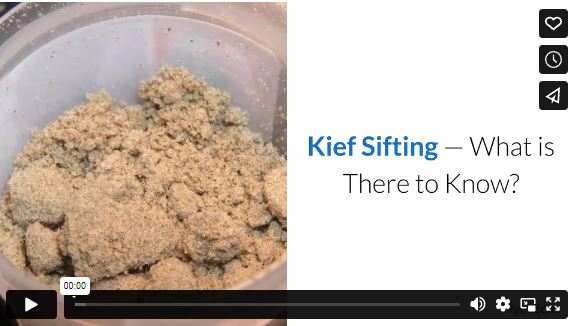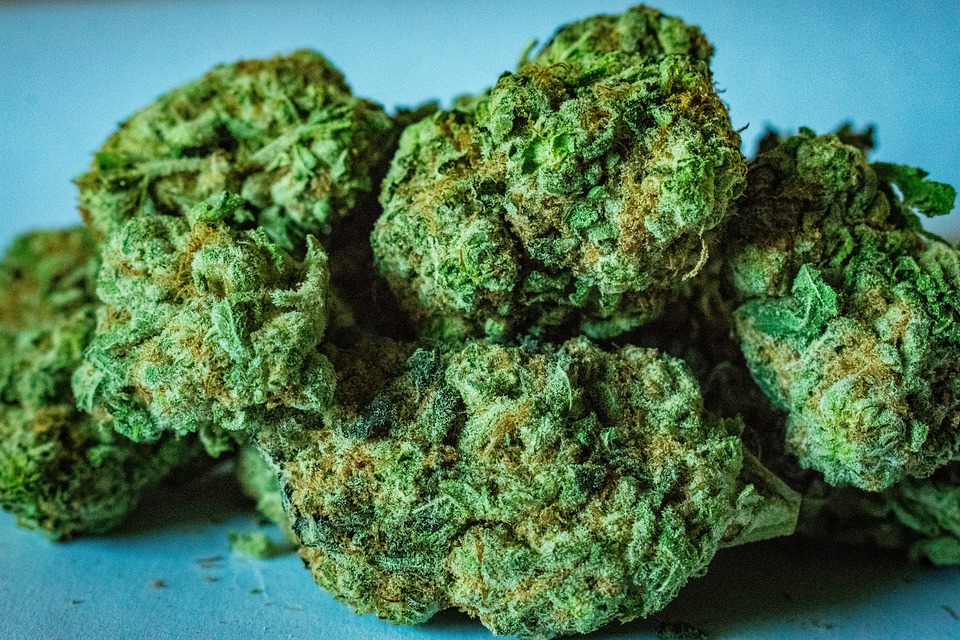Kief is a magical little thing that can boost any cannabis experience – whether through smoking, vaping, or edibles. But what is it, and how do you get it? This little guide is a great way to get acquainted with kief.
What is Kief?
Kief (AKA pollen or dry sift) are the tiny glands attached to little hairs called trichomes that cover the cannabis plant (though you’ll find most of the kief on and around the flower). These resin glands are full of cannabinoids and terpenes that make imbibing such a pleasure.
It’s possible that kief is an evolutionary feature to help protect the plant from plant-eating predators. Once they’re a couple of chomps in, and the animals experience enough of a disorienting high, they leave the rest of the plant alone to keep growing.
Fortunately for us bipeds, what is so disagreeable to those herbivores is precisely what makes cannabis such a joy to use. But if you want that smoking session with an extra kick, keep reading.
How do you use it?
You can use kief in a variety of ways. Some people like to sprinkle a little bit of the light-colored powder on top of their ground-up weed before rolling it into a joint. You can also simply add to any pipe or one-hitter bowl. Others use a pollen press to compress it into hash or refine it into rosin. These solid forms of kief can be smoked on their own, used in a dab rig, or melted or infused into different beverages and foods.
Hybrids of Mary Jane yield varying amounts of kief, but some strains (examples: Chemdawg, OG Kush, and Hashberry) produce significantly more than other strains.
How do you separate it?
There are various ways to separate kief from bud, so it depends on how serious you are about getting it. Before we delve into the methods of separating kief from bud, let’s take a moment to talk about screen materials.
When you’re researching screens, you’ll see them defined by mesh Lines Per Inch (LPI) or microns. When measuring with LPI, the higher the number, generally, the smaller the holes between the lines. With microns, however, the smaller the number, the smaller the hole. Sifting kief usually uses screens between 60 and 120 microns (or 80 to 270 mesh LPI).
There are generally two schools of thought for what material to use as your kief screen: stainless steel or monofilament.
- Stainless Steel: You can get stainless steel screens in all different sizes. The benefit of stainless steel is that it is durable and sturdy. It doesn’t stretch, warp, or get holes like fabric screens can, but it is also more difficult to get a really fine sift the way fabric can.
- Monofilament: Also known as silk screen, monofilament screens give you an exceptional sift because the threads can get packed in there. The monofilament screen also has a little bit of “give” without stretching, and they’re easy and inexpensive to replace.
For example RYOT boxes are generally 100 LPI mono filament and Kannastor grinders are 60 micron stainless steel.
Grinder
If you have a 4 piece grinder or screen grinder, you are set to collect a good amount of kief. Make sure it’s a quality grinder from a trusted brand. If the holes are too big, you’ll also get plant matter. If they’re too small, you won’t harvest much kief. A 2 piece grinder doesn’t collect kief since it doesn’t have anywhere else to go. With a 4 piece grinder, the multi-chamber utilizes gravity to separate the kief as it simply falls through the screen into the base chamber of the grinder. Needless to say, the more you use your screen grinder, the more kief you’ll collect!
Kief Box
A kief box can process a larger quantity of flower and yield more kief at a time than a grinder can. Indeed, a kief box is a great place to store your cannabis over time and mold is never an issue as well with a quality screen box. There are different configurations for sifter boxes. Some have a tray that slides out and some use magnetically secured sections, but essentially the screen is stretched over a wooden frame with the your herbs sitting right on top. Like with the screen grinders, gravity does most of the work and all you need to do is either give the box a gentle shake when you use it, or to accelerate your capture, you can grind your cannabis and use a card to drag it over the screen, causing the pollen to fall through. You can even layer multiple screens to get increasingly better quality, so the collection tray at the bottom holds the purest sift as only the purest pollen falls through the finer holes.
Freezing the Buds
The trichomes that hold the kief get really brittle when they’re frozen, which is bad if you want to keep the kief attached to the bud, but good if you want to separate them. Some people stick their flower in the freezer in a bag and then dry sift using a screen when everything is really cold. That will usually yield a high-quality sift.
Other people like to put dry ice and their flower into a bag made from screen material. The dry ice drops the temperature so quickly that the trichomes break off and can be sifted out the bottom of the bag. This method yields more pollen, but it usually has more plant matter than dry sift.
The lighter the color of kief, the freer it is from plant material, making it a “purer” form of kief. If you’re getting medium to dark green kief, there’s a lot of plant material clinging to pollen, but you can still get the desired light greenish/amber color by processing it further using screens with incrementally smaller holes.
There is a little bit of technique involved with separating your kief, and the tools and screen sizes you choose will directly influence the quality of your resulting pollen. The best way to get better at it, though, is to practice, practice, practice!
Video


